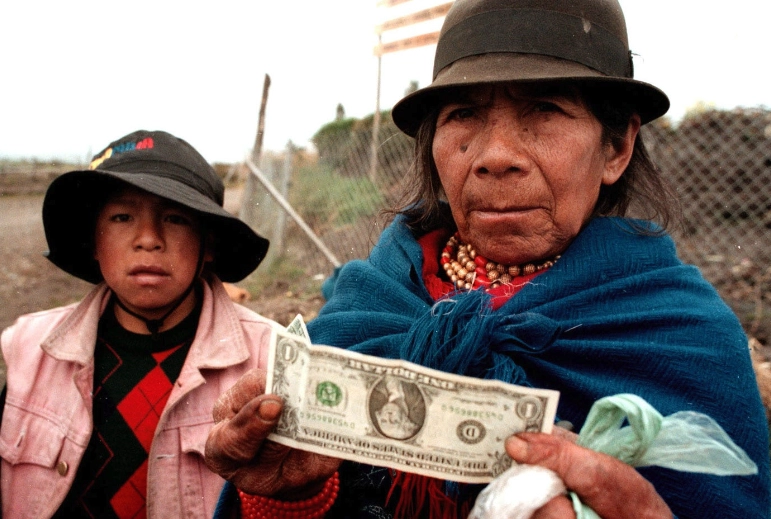The comparative method in the social sciences seeks to establish the causes of a phenomenon by comparing similar or different cases to identify the origin of an event. If we want to understand what is happening in Argentina by comparing it with a similar country, intuition would lead us to Uruguay. From a similar colonial past to its location on the Río de la Plata, the similar migratory flow, the way of speaking, or the production of meat and soybean, there are countless similarities. They also share the motherhood of tango and Gardel — even though the creole thrush is a native of Tacuarembó — and each country is home to one of the Salvo-Barolo twins. However, the country of the Uruguay River Eastern Bank has a much more stable political system than that of the Argentine Nation. This is attested to by the Porteño elites who migrate to the other side searching for calm, despite keeping their companies and jobs in Argentina.
While Uruguay appears in all indexes as the most consolidated democracy in Latin America, Argentina’s political system shows many problems of functioning despite the strong democratic commitment of its citizens, and therein lies the difference between the two cases. It is evident, for example, how different the systems of political representation are: on the one hand, there are consolidated parties that have developed a logic of inclusive competition; on the other hand, there is a party system with a Manichean logic that tends to the polarization necessary for “populist reason”. It also contrasts that while in the south of the Río de la Plata personalism abounds and is fertile ground for the sprouting of egomaniacal political leaders, in Uruguay the leaders have acted as anti-heroes and have put the collective before the “leadership”, following the example of the Treinta y Tres Orientales and of the hero Artigas who went to Paraguay to drink mate with Ansina.
If there is a country with which Argentina can be compared, using the criteria of what political methodologists (or vice versa) call Most Similar Systems Design (MSSD), it is Ecuador. The MSSD looks for explanatory variables in which countries are similar, and there is no doubt that these are the two Latin American cases that best meet this premise if we consider that they share a clear tendency to default (non-payment of debts) in economic terms and to populism in political terms. Allow me to explain and develop this reasoning.
Although “debt crises” are common in Latin America, Argentina and Ecuador occupy the first positions, compared to the other countries in the region, in the number of times they have incurred different forms of default and delinquency during this third democratic wave. Despite the differences — especially in terms of the size of GDP and industry—, the two economies share dependence on the external sector, high levels of inequality or distrust in their national currencies, which, in the case of Ecuador, was solved with dollarization, a measure that President Milei wants to adopt and which was already used by the Peronist Menem in its convertible version. They are two economies with inflationary tendencies and installed in the budget deficit, the same that ends up translating into more debt, inorganic emission, or other accounting tricks in the case of Ecuador, which cannot activate the banknote machine. They are also similar, and this is related to the political cycle, in that many of the economic authorities have not taken care of macroeconomic balances because their vision of the economy considers these to be something proper to orthodox economists loyal to the Washington Consensus.
Although Peronism has become the ideal Weberian type of Latin American populism, one of its founding fathers, together with Getúlio Vargas, is the Ecuadorian José María Velasco Ibarra, who first occupied the presidency of the republic in 1934. Since then, Velascoism was one of the pivots of Ecuadorian politics until the early 1970s. The political systems of Ecuador and Argentina always tend to populism and that is how, in the 21st century, while in the Andes the gap was built on Correism, in the land of Evita the axis of politics was Kirchnerism. Perhaps that explains why the Ecuadorian Jaime Durán Barba understands Argentine politics so well as to have defeated the all-powerful Peronism as a strategist.
In both countries, populism and the economic model have converged in the dollarization proposals thanks to two presidents who, besides being populists, share the nickname “El Loco” (The Crazy) for their harsh remarks: Abdala Bucaram in Ecuador and Javier Milei in Argentina. Abdala did not finish his government and was unable to implement his dollarization plan. Now it remains to be seen if Milei will be able to do so. If so, beyond what may happen with other policies and their consequences, the change of currency will substantially modify the functioning of the Argentine economy and politics, as it happened in Ecuador when it dollarized. In this sense, I do not doubt that “Peronism/K”, as we know it, will be its first victim.
*Translated by Janaína Ruviaro da Silva from the original in Spanish













